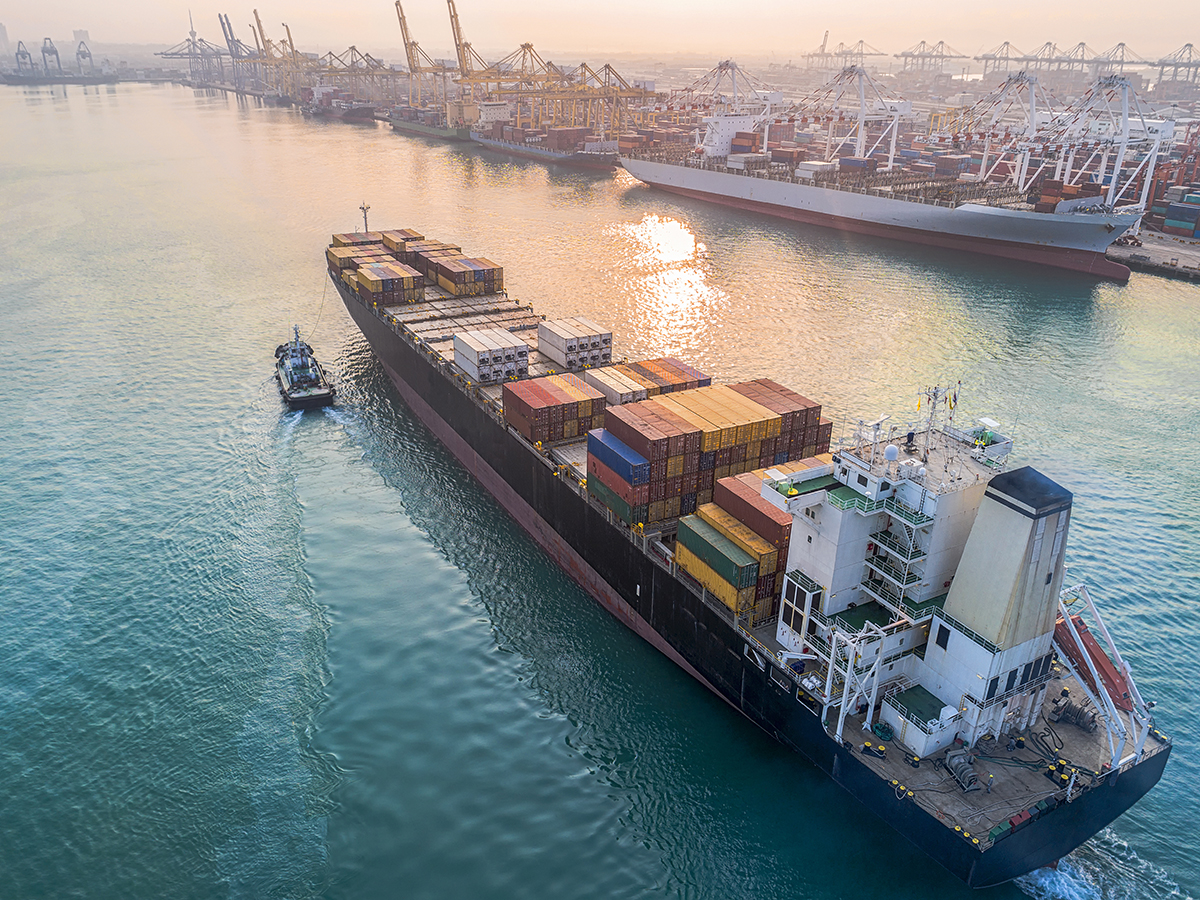This is an excerpt from a global shipping crisis report written by Chris Jones, executive vice president of industry and services at logistics provider Descartes. The company published the report earlier this month. You can see the report in its entirety here.
The global shipping crisis carried over into another month. February 2022 started with record year-over-year container import volumes versus 2021. February was consistent with logistics community expectations about strong demand and bookings in 2022. The economy and hiring also continue to be strong. Consumer expenditure data shows continued high demand for goods and supporting supply chain activity. Inflation and the Russia/Ukraine conflict could be the factors that depress the heightened consumer demand, but it’s too early to tell. The March update of the logistics and economic metrics Descartes is tracking point to a sustained impact on global supply chains.
February continued the very strong start to 2022 with another record for container import volume. Container import volume was down 3% from January 2022, but up 12% from January 2021 and 38% from February 2020. Considering that February this year was three days shorter than January, which equates to 9.7% fewer days to process shipments, it was actually a stronger import month than January. One factor that may be driving the high February volumes is importers accelerating their shipments in advance of any issues that may stem from the International Longshore and Warehouse Union (ILWU) negotiations. Another month effectively exceeding the 2.4 million container import mark indicates that the chronic supply chain disruptions (e.g., delays, variability, etc.) importers and the logistics community have been experiencing are not abating in the short-term.
The shift from West to East coast continues. Importers and logistics services providers (LSPs) continue to shift volume away from the major West Coast ports. Comparing the top 5 West Coast ports to the top 5 East Coast ports in February 2022 versus May 2021 shows that, of the total import container volume, East Coast ports now represent 44% of the imports, while West Coast ports represent 42.6%. In May 2021, the split was West Coast 47.4% and East Coast 39.5%. All top West Coast ports declined in volume while all top East Coast ports increased. The Port of Los Angeles righted its three-month container import processing decline and moved to the top spot at 409,464, still down from its high of 530,432 in May of 2021.
Continued and stronger improvement in the Retail Inventory to Sales ratio. The Federal Reserve Economic Data (FRED) retail inventory to sales ratio showed a more significant improvement of 0.08 to 1.16 for the latest update (Dec. 31, 2021). The retail inventory to sales ratio is an important indicator of retailers’ ability to keep goods on physical or virtual shelves. The ratio improved but is still relatively low compared to pre-pandemic numbers. The continued record U.S. container import volumes may be one of the reasons the ratio improved as retailers try to measurably catch up on depleted inventory positions.
Strong consumer demand and another strong jobs report put more pressure on supply chains. Goods purchases by consumers is one of the most significant drivers of high import volumes and the resulting global logistics challenges. The ratio of personal expenditures of goods to services reversed course and increased by 2.4% to 54% for the latest reported date of January 1, 2022. A breakdown of the data shows that personal consumption was up in all three categories — goods, non-durable goods and services — by an overall 2%; however, durable goods purchases increased 9.7%. The Omicron variant’s decline has made it more of a nuisance than a determining factor impacting purchases or supply chain velocity.
Another indicator of a continued strong economy, higher demand for goods and related supply chain activity is the Federal Reserve Unemployment Rate. The early March jobs report showed a decrease in unemployed workers of 0.2% to 3.8%, reversing February’s report of a slight increase and translating into 678,000 jobs created — also significantly more than expected. The unemployment rate continues to approach the February 2020 pre-pandemic and historical non-wartime low of 3.5%.
What could slow this train down? Inflation and the Russia-Ukraine conflict might. A strong economy and hiring environment is the force behind the record demand for consumer goods and the import volumes the U.S. is experiencing; however, there are not enough goods to meet demand and inflation has been on the rise since mid-2021. February 2022 consumer prices were 7.9% higher than the same period in 2021 and the highest it has been since January of 1982, according to the U.S. Department of Labor. However, as the January 1st reported consumer goods expenditures show, the current level of inflation may not be enough to curtail expenditures and decrease import volumes.
Energy has been cited as a significant inflation factor and this is where the Russia/Ukraine conflict may accelerate inflation and help slow down consumer demand. Russian oil represents approximately 8.6% of the total oil consumed in the U.S., according to the International Energy Agency. The decision of the Biden administration to stop importing Russian oil will tighten the fuel market. This has been anticipated in the market as gasoline prices increased 50 cents per gallon in the first week in March alone, according to the U.S. Energy Information Administration. In addition, according to Ship & Bunker, ocean carriers are seeing record fuel costs of almost $1,000 per ton for very low sulfur fuel oil (VLSFO).
Another factor to consider is the impact of sanctions that are being applied to Russia, Belarus and the breakaway portions of the Ukraine. Sanctions apply to not only these regions, but also to specific companies and people. The impact of these sanctions is not limited to the conflict region and, in many cases, apply globally. While Russia in particular has more of a mid-tier stance in global trade, the impact of sanctions on specific industries could be significant.
Chris Jones is executive VP of industry and services at logistics provider Descartes.
Related Posts
-
The U.S. Census Bureau has released advance indicators showing that the international trade deficit and…
-
Mixed signals mark third-quarter financial and economic indicators impacting distribution, such as LEI, industrial production…
-
Real GDP increased at an annual rate of 6.9% in the fourth quarter of 2021,…





